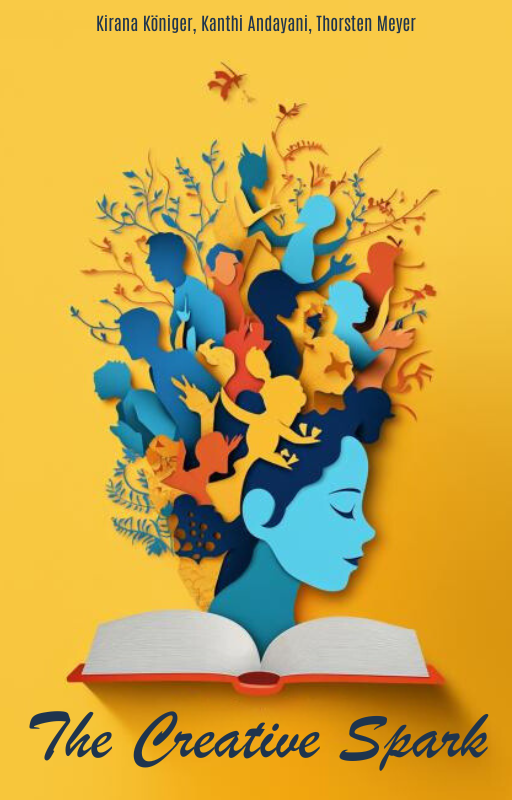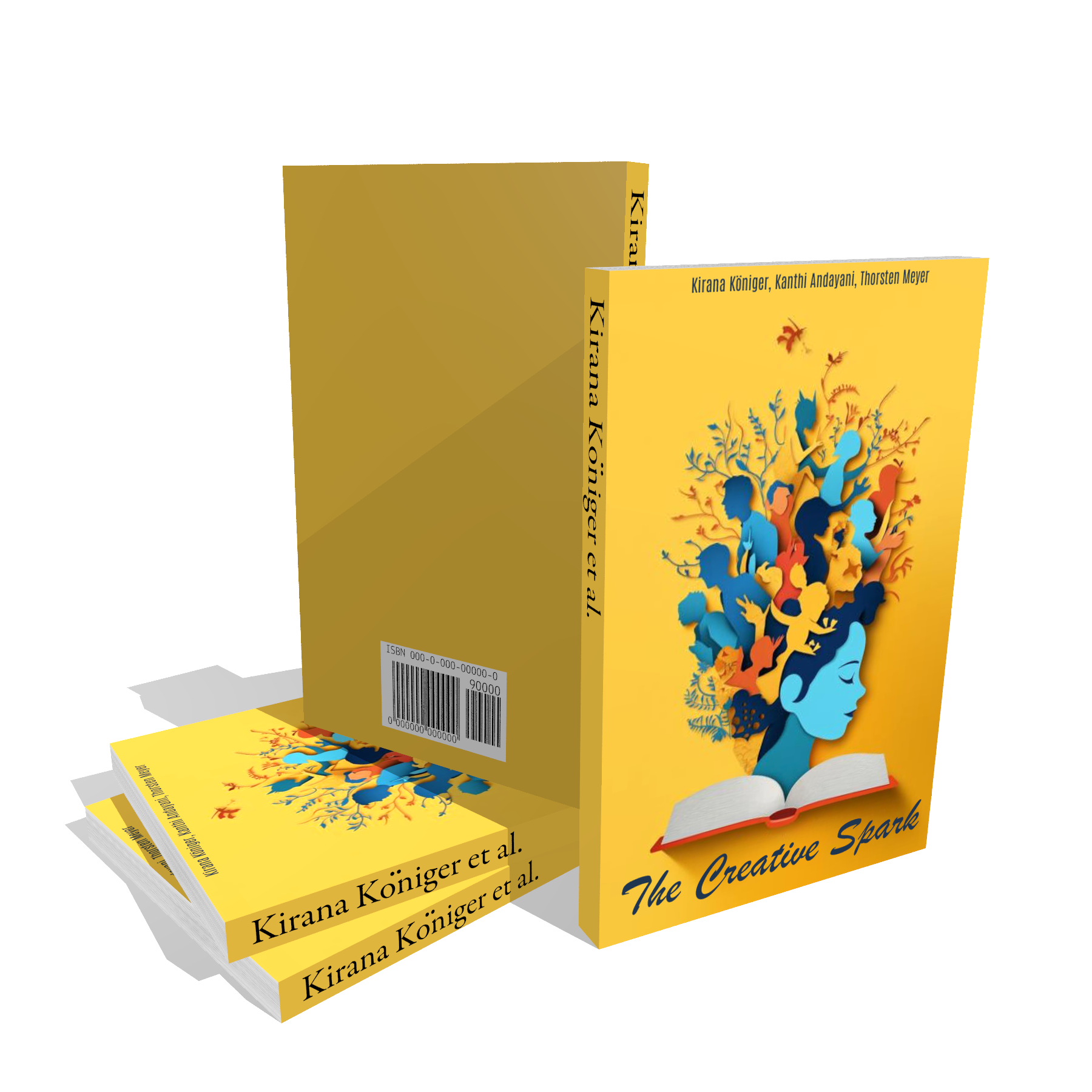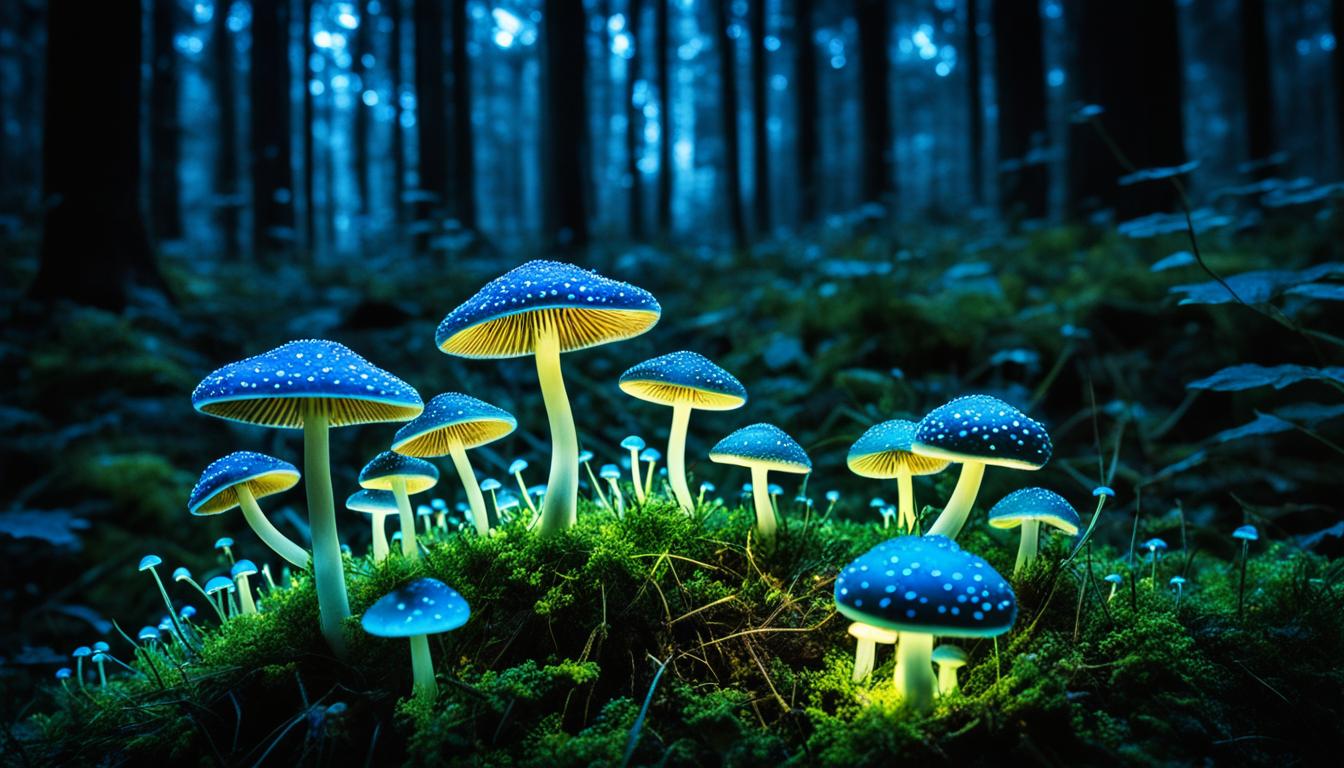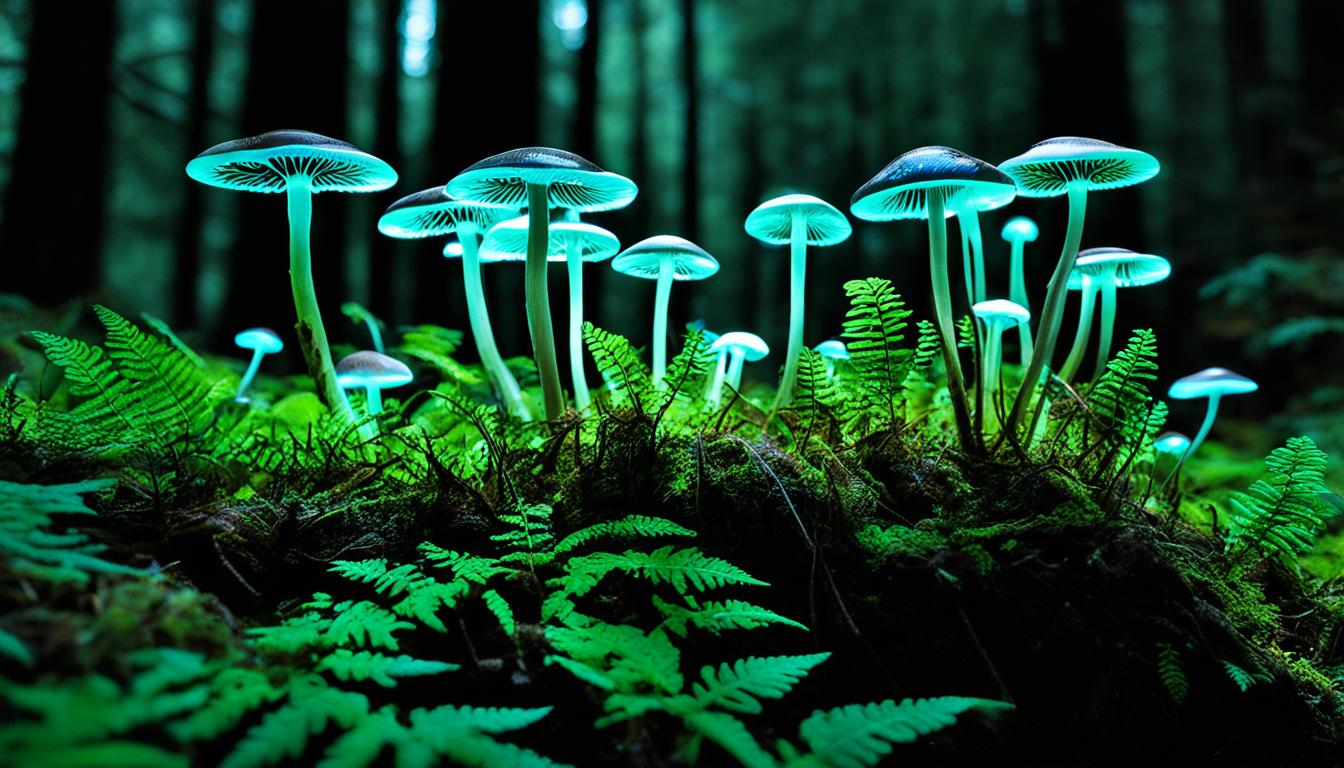Igniting Creativity in a Digital Age
In an era where digital distractions often stifle our innate creativity, “The Creative Spark: Unleashing Your Inner Artist” emerges as a crucial guide. Authored by Kirana Königer, Kanthi Andayani, and Thorsten Meyer, this book offers a fresh and comprehensive approach to rekindling the creative spark within each of us.
A Fusion of Global Creative Perspectives
Cultural Convergence
Drawing from their rich and diverse backgrounds, the authors combine Indonesian heritage, European influences, and global experiences to create a tapestry of creative perspectives. This diversity is not merely a backdrop but the foundation of a philosophy that views creativity as a universal language capable of bridging cultural divides.
Blending Eastern and Western Wisdom
The book seamlessly integrates Eastern philosophical traditions with Western creative methodologies, offering readers a holistic view of creativity. It equips them with a toolkit that includes mindfulness practices rooted in Asian wisdom alongside contemporary Western psychological theories.

Redefining Creativity for the Modern World
Beyond Traditional Art Forms
“The Creative Spark” challenges readers to broaden their understanding of creativity beyond the confines of traditional artistic domains. The authors effectively argue that creative thinking is an essential life skill, applicable to problem-solving, personal growth, and professional development across various fields.
Everyday Creativity
A significant portion of the book is devoted to uncovering and nurturing creativity in everyday life. Readers are guided through practical exercises that help them:
- Transform routine tasks into opportunities for creative expression
- Sharpen their observational skills through mindfulness
- Apply creative thinking to both personal and professional challenges
- Foster a creative mindset that influences every aspect of their lives
The Science of Creativity
Neurological Underpinnings
The book grounds its approach in scientific research, exploring how the brain facilitates creativity. Key discussions include:
- The roles of different brain regions in creative thinking
- The impact of neuroplasticity on developing creative abilities
- How environment and lifestyle affect creative potential
- The connection between creativity and cognitive health
Psychological Insights
The authors also delve into the psychological dimensions of creativity, tackling common obstacles such as:
- Overcoming imposter syndrome and self-doubt
- Managing perfectionism and the fear of failure
- Building resilience in the face of criticism
- Balancing structure and spontaneity in creative endeavors
A Practical Guide to Creative Growth
Engaging Exercises
Each chapter is filled with exercises designed to inspire creativity across various disciplines:
- Thought-provoking writing prompts for aspiring authors
- Visual challenges for designers and painters
- Culinary experiments for food enthusiasts
- Mindfulness practices to enhance creative awareness
Navigating Creative Challenges
Overcoming Roadblocks
The book provides strategies for dealing with common creative challenges, including:
- Breaking through creative blocks and periods of stagnation
- Rekindling passion for long-term projects
- Finding inspiration in unexpected places
- Balancing creative pursuits with everyday responsibilities
Creativity in the Digital Age
Embracing Technology
The book thoughtfully examines the relationship between technology and creativity, exploring topics such as:
- The potential of digital tools to enhance creative processes
- Balancing digital and analog approaches to creativity
- Using social media to share and promote creative work
- Addressing ethical considerations in the era of AI-generated art
Sustainable Creativity
The authors also emphasize the importance of sustainable creative practices, encouraging readers to consider the broader impact of their artistic choices.
A Journey of Self-Discovery
Personal Narratives
The authors share personal stories from their own creative journeys, adding depth and relatability to the book’s content.
Reflective Practice
“The Creative Spark” encourages readers to embark on a journey of self-discovery through creativity. Thought-provoking questions and journaling prompts guide readers to:
- Uncover their unique creative strengths and passions
- Explore the connection between creativity and personal identity
- Reflect on how creative expression can drive personal growth
Critical Analysis
Strengths
- A comprehensive approach that transcends traditional artistic boundaries
- A rich multicultural perspective offering global insights
- A strong scientific foundation balanced with practical applications
- An inclusive tone that makes creativity accessible to everyone
Considerations
- Some readers may find the wide range of topics overwhelming
- Certain cultural references may resonate more with specific audiences
- Advanced practitioners might find some basic concepts familiar, though the book still offers fresh perspectives
Conclusion: Sparking a Creative Revolution
“The Creative Spark: Unleashing Your Inner Artist” is more than just a guide to becoming more artistic—it’s a roadmap to a more imaginative and fulfilling life. By presenting creativity as an essential human trait rather than a specialized skill, the authors have crafted a work that has the potential to transform how readers approach not only art but life itself.
Rating: 4.85/5 stars
Highly recommended for its inclusive approach, scientific grounding, and transformative potential. “The Creative Spark” stands out as a comprehensive, insightful, and practical guide to creative living in the modern world, promising to ignite the artistic flame within every reader.









